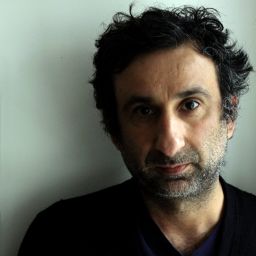Story highlights
Mustafa Kemal Ataturk was the founder of Turkey
Ataturk's omnipresence is visible in a variety of places in Turkey
Photographer Ersoy Emin spent several years capturing the country's love-affair with its founder
He is looking over the shoulder of a mechanic as he works on the motor of an old Turkish Tofas. In a seedy bar near the Black Sea, he watches over a customer, gun in one hand and a stiff drink in the other. His stern blue eyes are gazing over students at a public school, laboring over his dream of a modern Turkey.
It seems nearly impossible to walk a few meters anywhere in Turkey without bumping into the handsome, chiseled face of Mustafa Kemal Ataturk, the man who invented Turkey as we know it.

Ataturk’s omnipresence, even in the most absurd places and situations, was not lost on British photographer Ersoy Emin, who spent several years trying to decipher the iconology of Ataturk. Born to Turkish parents, Emin set out on a photographic-cum-philosophical exercise on what Ataturk’s image means for Turks today.
“There is such a range of images of him. He seems to be represented in so many different ways. He meant so much in so many different ways to people. He was a genius military figure to people and a father figure to the nation.”
“I was not so interested in the compulsory images of Ataturk you see in banks or in the main square but more of ones that you see tucked away in little cafes, small car garages and little businesses, and people’s own images of him,” said Emin.
Whether you are with him or against him, Ataturk’s position in history is indisputable. He was a military genius who mobilized and modernized an under-supplied military force that humiliated Allied forces during the Gallipoli campaign in 1915, a turning point in the First World War that paved the way to Turkey’s War of Independence. A political visionary, he westernized Turkey, enforcing secularism and promoting women’s rights.
Join the conversation
But the legacy of his military tactics is still an open sore to Armenians, many of whom were slaughtered and forced to leave Eastern Anatolia, suffering unspeakable brutality from Turkish forces. Challenging Turkey’s past and its role in the Armenian mass killings is considered treasonous. It was what nearly sent Nobel Laureate Orhan Pamuk to prison.
Still, at home, Ataturk is seen as a national saint. Unlike the images of Che Guevara printed on T-shirts and coffee cups worldwide, the presence of Ataturk’s image in the day to day lives of Turks seems to have a comforting element. A man who was known to travel the nation to micromanage every industry, large or small, his presence seems to be largely felt in every house.
“It is almost faith-like, these images. They have not been banalized but definitely they are part of the social fabric.”
“You wouldn’t dare deface the image of Ataturk even among the supporters of Erdogan.” (Recep Tayyip Erdo?an, the current President of Turkey.)
In Turkey, to challenge or even question Ataturk’s image is somewhat sacrilegious. That’s even more so today, said Emin, who noticed a change in attitudes recently.
“Lately, responses have changed,” he said. “I have been back recently and have seen that these images mean something different. People seem to have it as a way of protest almost to what is going on.”
“He represents something that is in danger to them, something that has been taken away, which was not there when i first started asking questions back in 2007.”
Ersoy Emin is a British photographer based in London.










